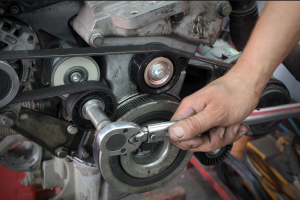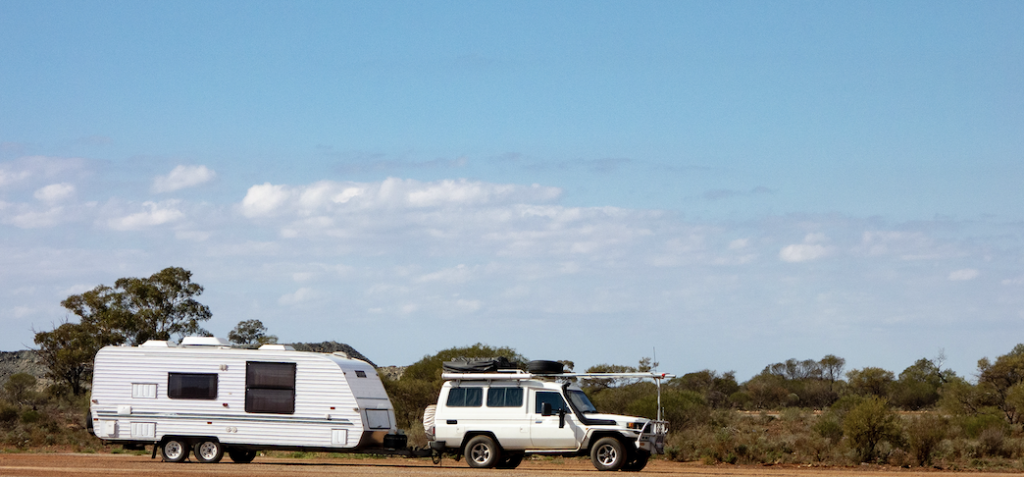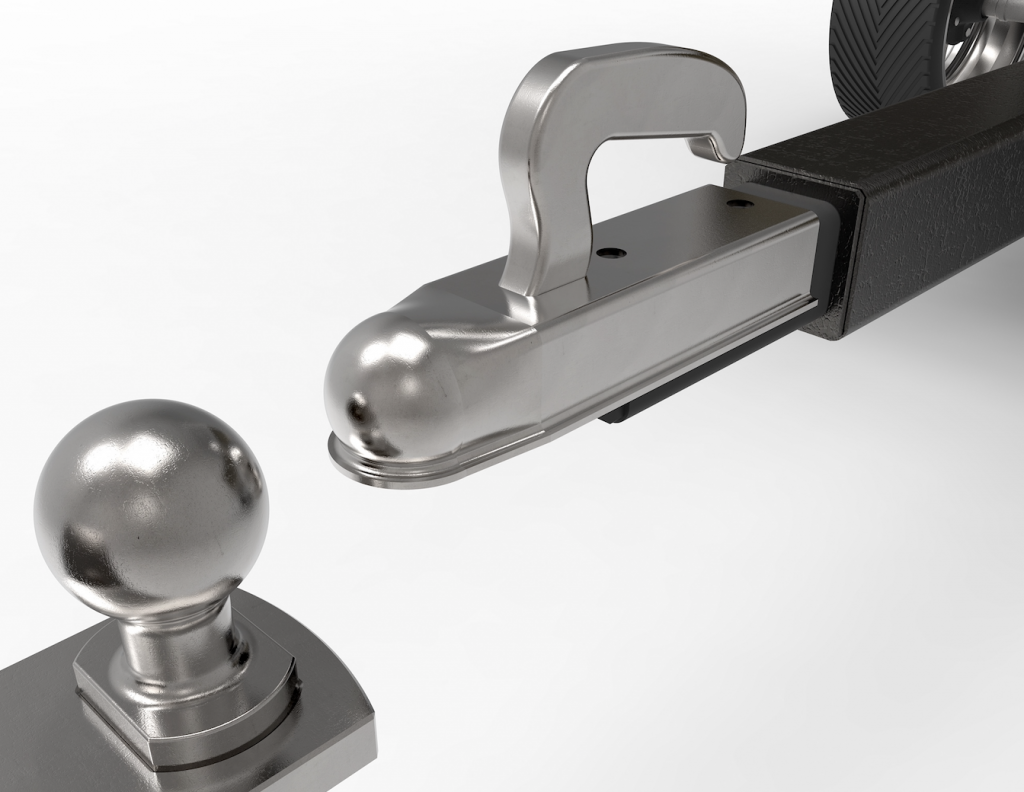Beginners and professionals agree on one thing when it comes to towing: it is not something to take lightly.
Even if you have been hauling trailers for several years now, towing is still difficult to master. It is even worse when it is your first holiday with your family in a small camper trailer.
In Reality, Towing is Not for Everyone
It is always best to leave this job to the experts. However, if you insist on towing on your own, especially if it is merely for your family’s enjoyment, there are a few things to know about. These things will help you have a smooth-sailing experience.
Why It is Not Recommended to Choose DIY Towing Cars
Before you start towing, you should understand how difficult such a task is. It may look easy, but towing comes with a lot of challenges. First, you have to consider several factors, along with the right equipment, to avoid any complications.
Hiring an experienced professional towing service company will make sure you and your car are both safe. Of course, these experts know how to keep the road safe for other people as well.
DIY towing should not be practised, especially if you had a road accident and you are inexperienced with towing. You should not call your friends either to ask them to help you tow your vehicle. You could end up regretting this decision, especially if your goal is to save money.
Let’s Talk About Torque

Think about the following scenario. You are driving your truck, and you have a boat hitched to your car. It is a windy day, and the strong wind will make the boat sway from side to side.
The problem gets worse when you have to drive up a hill. Even an elevated portion of the road can cause severe issues.
Tow truck drivers know about torque, which can be dangerous if you are new to towing. One common mistake that people make when they tow is they use a rope to connect the vehicle to the trailer. Unfortunately, the cable can easily snap, which is just one of the greatest risks of DIY towing.
The road rules also make towing complicated. In New South Wales, the rules are much stricter compared to other states in Australia. They help ensure the person towing and everyone else on the road will remain safe. Improper towing can quickly result in putting lives at risk, which is why it is not a task for amateurs.
Additionally, tow truck drivers go through numerous hours of training. They also have to pass exams before the Roads, and Maritime Services (formerly Roads and Traffic Authority) allows them to operate.
How to Prepare to Get Towed
In Sydney and the rest of New South Wales, vehicles should not be towed if the tail lights are not working properly. It should also be checked that the cars, including both the tow truck and the trailers, should not carry dangerous goods. These items could risk the safety of the public. You will need to get permission to operate this towing activity from the authorities.
Drivers are also not allowed to tow a trailer if they cannot control the trailer.
Some vehicles are not permitted for towing as well, including:
- Wheeled recreational devices
- Wheelchairs
- Wheeled toys
- Bicycles
You Should Know That You Can Only Tow One Car at a Time
Now that you understand the basic rules above, there are a few more things to do to get ready for towing.
With the help of their experience and knowledge, we have compiled a list of things to do when towing.
Below you will find the critical tasks that should make up your pre-towing checklist. We also have some driving tips to wrap things up. This way, you will have a smooth, safe, and worry-free towing adventure, whether alone or with other people.
-
Assess Your Vehicle
The very first step that most people tend to skip is knowing what their vehicle is. Drivers assume their car can be used for towing. They have a large vehicle, so they can haul whatever they want. Unfortunately, it is not the case.
Before towing, you have two things to know: which truck can do the job you wish to accomplish and how much to tow (weight).
It may sound straightforward enough that even beginners with absolutely no experience in towing can attempt this task. However, there is a lot to know about the car’s engine, its transmission, equipment, and many other components. Using the right truck is essential.
Let us have an example
If you have a Ford F-150, this pickup can tow 2,200kg to 5,900kg. The numbers vary depending on how it is configured. The F-150 4WD with a 167cm bed and a turbo V6 engine can support up to 3,447kg.
The question now is this: why are there discrepancies between the towing abilities of each truck versions? After all, they are the same vehicle, right?
In reality, this dilemma exists in other brands and models as well. Trucks do not have as much detail as you may want regarding their tow ratings. You get the tyre and wheel size, along with the inflation pressure data of the tyres and even the gross vehicle weight rating. However, the manufacturers usually do not provide the individual tow rating of a truck. -
Know About the Factors That Affect the Towing Ability of the Car
Many trucks allow you to configure them based on your preferences. With all the changes you have made, the tow rating of your vehicle quickly changes.
The following can modify the ability of your truck to tow:
- Its cab size
- Engine
- Transmission
- Length of bed
- Drive type, whether a two-wheel or four-wheel
You can also add the optional trailer packages, which makes towing even more complex.
-
Check the Tyres of the Trailer
It is time to get ready to tow.
Even if you have all the numbers down and you know you have the right vehicle for the job, you still have a few more things to do. Many drivers would inspect the tyres of their truck, but they forget their trailer tyres should be checked as well. Look for cracking and dry rot. Most of the time, you leave your trailer outside for a few months. It can affect the condition of the tyres, and they may not be fit for the road.
Even if you see that the tyres have plenty of tread, it does not guarantee they will not fail while you drive. Also, make sure the tyre pressure meets the requirements for towing. Some towed vehicles need to have higher pressure for them to be pulled without issues. Finally, the wheel lug nuts of both the trailer and the tow vehicle are adequately tightened to achieve a specific torque.
-
Ensure Your Tow Vehicle is Properly Maintained
As with any car, tow vehicles should be maintained regularly. When you tow, it places extra stress on the truck. Therefore, if you plan a road trip, the pickups should be in good condition. For instance, its oil and filter should be changed. We have a guide that can help you do this task on your own.
Also, you should make sure the brake pads can function for a long time or at least while you are on the road. You may also want the engine coolant filled to the right level. Top off the transmission fluid as well.
If the trailer has brakes, you can check and adjust them. Wheel bearing should be well-greased, too.
These checks and tunings do not take a lot of time. Make sure that you allocate a few minutes of your time to inspect the condition of both the trailer and tow truck before you hit the road.
-
The Tow Ball Should Match the Trailer
If it is the first time you will tow, you know that you need a few accessories to start. One of them is the tow ball, which should be of the same size as the trailers coupling.
It is easy for beginners to make this mistake. Unfortunately, tow balls that are incorrectly sized can cause accidents. Many experts believe it is the number one reason for trailer disasters.
In Australia, the standard tow ball measures 50mm, and they are attached to a tow bar. Most trailers have a 50mm coupling, which makes it easy to connect the container to the vehicle using the hitch.
In many cases, the 50mm tow ball can perform different towing duties. It should be noted, however, that these tow balls have limited articulation, especially when you compare it to an off-road coupling. If you go over the limits, the coupling could get disconnected from the tow ball. Worse, it could damage the tow bar.
-
Go for the Right Hitch
The hitch refers to the secure metal structure that is connected to the vehicle. It comes with two components: the trailer hitch that you use to attach to the tow vehicle and the receiver hitch where you attach the tow ball.
Many vehicles now have a factory-installed hitch for towing. However, if your car does not have it, you need to find the right hitch before you tow. You can visit a local trailer rental service company and ask for guidance.
Although you can connect the hitch to the bumper of the vehicle, it is better to attach it to the frame.
-
Have Safety Chains
Trailers come with safety chains that you will connect to the hitch. Avoid running these chains straight, which is a common mistake that people do. Instead, cross them together for better security.
If you run into problems that may have caused the trailer to get disconnected from the vehicle, you will not have to worry too much. It is because the crossed chains will create a “frame” that will hold the trailer’s tongue. If ever it falls, the chains will catch it.
You will need to keep the chains tight so that the trailer does not drag on the road. However, there should be enough room for the container to move, which is crucial if you have to make a sharp turn.
-
Have Working Lights
Another significant thing that you should include in your to-do list is to double-check the trailer lights. Inspect the electrical wiring system of the trailer before you drive. Everything should be properly connected to the vehicle.
Touch the wires with your hand and make sure they are loose enough. This way, you can make turns without them getting disconnected from the car. However, the wires should not be so loose that they end up touching the pathway.
You can ask another person to visually confirm that the lights of the trailer are working, including the running lights, turn signals, hazard lights, and brake lights.
-
Have Additional Helpful Components
You can get tow mirrors, and you can switch to a larger fuel tank. Tow mirrors are excellent for those whose trailers are wider than the tow vehicles. The mirrors will help you see the blind spots while you drive. Also, they can give you better rear visibility as you back up. Meanwhile, a larger fuel tank is great for full-sized trucks. It is a good idea if you plan to do a lot of towing since you use more fuel when you pull another vehicle. You may not easily find a gas station in a remote area, which is why it is always better to have a bigger tank. You can also use wheel chocks, which are useful when you unhook the trailer from the vehicle. They are simply wedge-shaped blocks that you will put in front of the trailer’s tyres, as well as at the back. They are sturdy enough to stop the caravan from rolling away when you release it from the vehicle.
-
Be Prepared for Any Unforeseen Events
The goal is to keep your vehicle on the highway without any problems. It is why checking all elements is essential before you start your journey.
You can easily get stuck on the side of the road when you are driving a regular car. You have a bigger chance of running into different issues when you are pulling a trailer behind you.
One good practice is to have at least one spare tyre. A lug nut wrench is also useful in any situation but make sure it is specific to the wheels of your trailer. You should bring a jack as well so that you can work correctly on your container if you have a flat tyre.
-
How to Stay Safe When Towing
Once you have the trailer hooked to the tow vehicle, you can start your adventure. However, towing anything on the road; regardless if it is a pop-up camper, travel trailer, or a powerboat needs skill, attention, and practice.
It helps to know your trailer and its components. You are already aware it weighs more than your tow truck. The extra weight will prevent the truck from stopping at the right time after you hit the brakes, for instance. It will also be difficult to navigate when you make a turn.
The height of the trailer can also be a problem in some cases. If it is taller than your truck, you have to consider clearances when driving along bridges or even going to a gas station.
Here Are More Quick Tips When Driving a Tow Truck With a Trailer Behind
Choose to make wide turns, particularly when approaching corners and curves.
- Increase your stopping distance when you drive.
- Brake sooner than you would when you are not towing.
- Only drive in the right lane when you are on the highway to avoid any problems with other motorists.
- Staying in the right lane will make it easier to stop in case of a tyre blowout.
- It helps to adjust the brakes of the trailer depending on the load. If towing something heavy, set it to utilise more force than usual. You may want to readjust if you haul a lighter object.
- Have someone (spotter) to guide you when you back up. You can also install wide mirrors to get all the visibility you need.
Practice makes everything easier, so you may want to test your driving skills with a trailer in tow. Before you head out, try accelerating, braking, backing up, and turning. It also helps to check your route prior to driving. Some roads will not accept trailers, while others will have limits on weight, height, and width. Plan your route ahead of time to avoid any inconvenience.
As much as possible, you should leave the towing to professionals. It is much safer and smoother.


